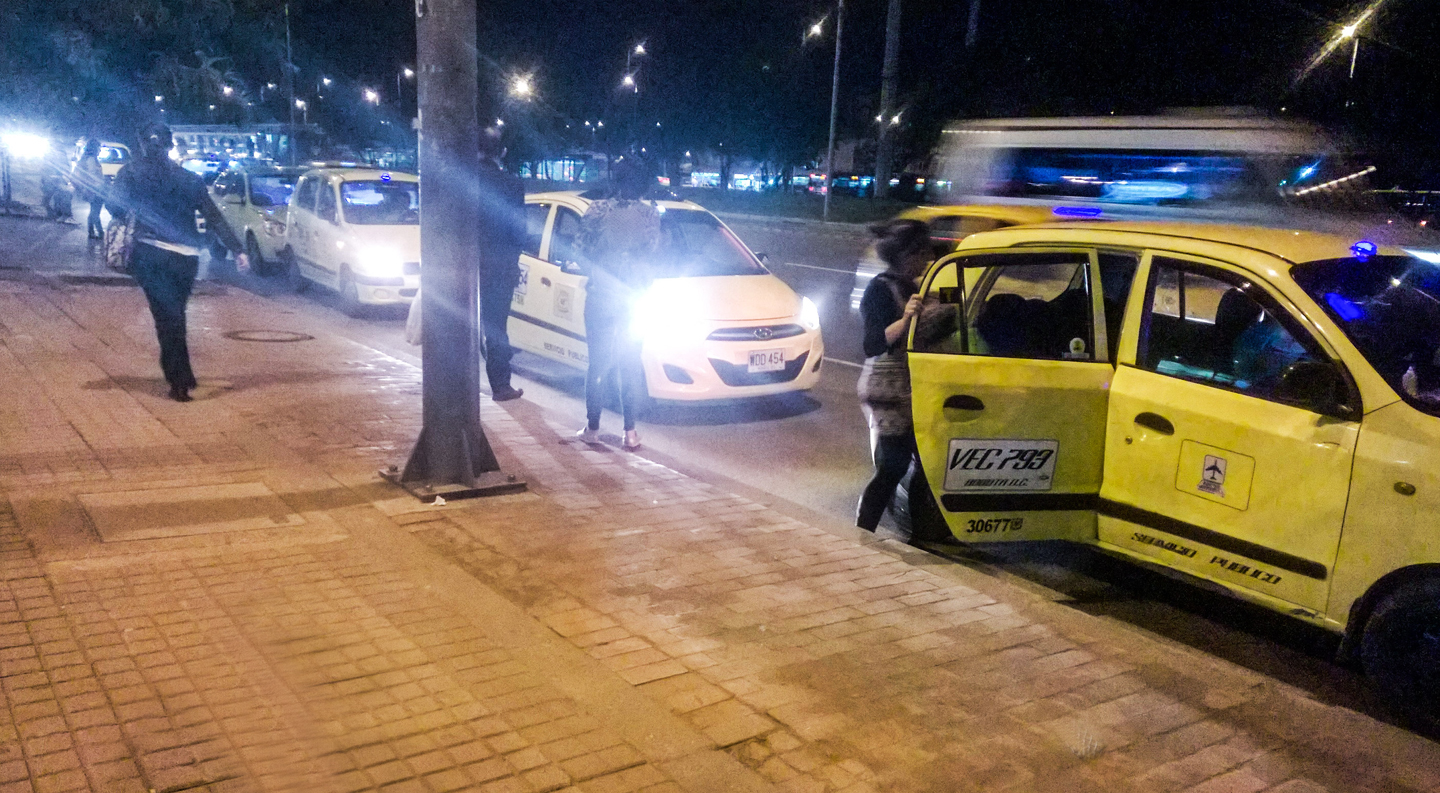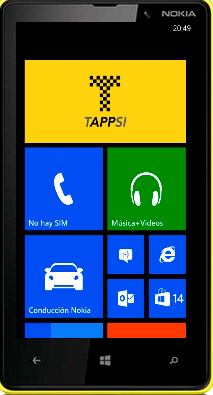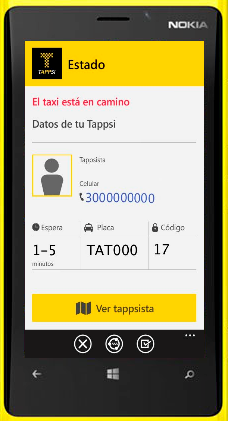It was pouring that day in Bogota, Colombia—that’s pretty common in the equatorial country—as Salcedo and a colleague left their offices and tried to get a taxi cab in the soggy rush-hour traffic.
“It’s really hard to hail cabs in Bogota when it’s raining,” says Salcedo. “A lot of people are trying to stay dry and get home as fast as possible. We stood there calling taxi dispatch companies, and after half an hour could not get one. I thought, ‘There has to be a better way to do something as simple as get a cab when you need one.”
Salcedo’s better way: Create an app that brings together people needing rides with the city’s 50,000 taxi drivers. Launched in 2012, the app, called Tappsi, quickly became a market-leading solution. Today it’s used by more than 1.7 million people. Salcedo credits the success of the app in part to the right time in the right place—and to Microsoft technologies, including the services and big data capabilities of Microsoft Azure, Windows Phone, and the Windows 8 operating system, which is used for kiosks placed across the city.
The Tappsi app hit the market in September 2012, just as smartphone use was taking off in Colombia, and grew quickly in popularity with consumers—and cab drivers. “Drivers told us about the problems with radio dispatch calls, which often led to them getting calls to pick up a customer all the way on the other side of the city,” says Salcedo. “It was inefficient and frustrating for drivers. Our app aimed at providing locations of customers and of cabs to greatly improve efficiency.”
Tappsi needed a cloud platform to deliver information to both drivers and their customers, and initially turned to Heroku. That turned out to be too expensive, so it moved its cloud services to Amazon. Then Salcedo had a meeting with a Microsoft representative.
“He showed us the possibilities for cross-platform cloud services and big data functionality that we could achieve with Microsoft Azure,” Salcedo says. “And we saw great potential functions we could deliver using Windows Phone and Windows 8. Windows provided a compelling package of technologies that could address our vision for cloud and mobile services.”
Microsoft Azure helps Tappsi not only deliver great services, but also expand its capabilities beyond simply connecting taxi customers with drivers.
Tappsi is currently using Azure Notifications Hubs, a cross-platform service for sending mobile push notifications to the platforms running Tappsi, including iOS, Android, and Windows Phone. Azure Notification Hubs lets Tappsi use a single API call to target individual users or entire audience segments across all the devices running the Tappsi app.
But Azure is also creating other potential opportunities. “In particular, we see compelling uses for Azure HDInsight by using the Apache Hadoop engine to do predictive analysis of cab rides in the city,” says Salcedo. He says that would involve collecting data from a variety of sources and then using HDInsight to create heat maps of spots in the city with the largest concentrations of cab requests. Those maps, in turn, will be overlaid with other heat maps showing concentrations of cabs.
“Our goal is to anticipate demand and predict where people will be requesting cabs at a particular day and time, and then give drivers that information,” Salcedo says. “That way, drivers can be more proactive by getting to the areas where customers will likely be waiting.”
Tappsi is also looking at using the HDInsight engine on historical data to use for a guide that gives drivers insights into past patterns. They could use this information, for example, to drive to a particular place in the city at a specific time of the day, knowing there is a strong likelihood of finding customers.
Based on initial results using the Azure Big Data technology, Tappsi may work with municipal authorities by sharing information that could help the city government understand and address issues such as areas with bad traffic congestion or streets that need repairs.
For Tappsi, the appeal of the Microsoft technologies extends beyond cloud services.
“The new Windows Phone devices were just beginning to show up in Colombia when we launched Tappsi,” says Salcedo. “We immediately saw not only a need to make our app available on the Windows platform, but also ways to use the tiles and other aspects of the Windows Phone interface to deliver additional functions, such as tracking maps to show when a cab is on the way, or simply the ability to touch a button to request a cab in a favorite location from the main screen.”
Tappsi is also evaluating ways to use the support in Windows Phones for near-field communications (NFC). “Sadly, we have a safety problem with cabs in Bogota,” Salcedo says. “Sometimes criminals will get ahold of cabs and then commit crimes, including picking up people and robbing them. We are working with Microsoft and the Bogota police department on distributing 10,000 NFC-enabled chips that will be embedded in cabs. Customers can then simply hold their Windows Phone near the vehicle before getting in to see if it’s a genuine taxi service that has been background-checked.”
Tappsi has also benefited from Microsoft innovations that are helping developers. The company saw an opportunity to create a desktop version for corporate use and for kiosks around the city.
“The popularity of Tappsi opened doors for us among corporate and civic customers such as malls, hotels, tourist spots, and the Bogota Chamber of Commerce,” Salcedo says. “There was a great opportunity to install kiosks at locations around the city to give people another way to hail a cab.”
Fortunately, creating a kiosk-based version of Tappsi required only minimal effort. Using the universal apps capabilities that are part of Microsoft Visual Studio 2013, Tappsi leveraged the core architecture developed for the Windows Phone version of Tappsi to quickly create a kiosk version running on Windows 8.
“The core of the code takes care of communications with the server, including the business logic and app workflow,” says Salcedo. “The only thing we had to change for the kiosk was the interface. With the universal apps technology from Microsoft, we avoided having to create an entirely separate app for the kiosks. We created the Windows 8 interface in about three weeks, and estimate that we saved about 60 percent in development time.”
The quick iteration of the app led to even more ideas, including a desktop version that could be available in corporate offices on reception desks or even on employee desktops, making it simple to schedule a cab pickup.
“We have a great relationship with Microsoft,” says Salcedo, whose company is expanding into other Latin American countries, including Peru and Ecuador. “The Microsoft portfolio of technologies is opening up new ways of innovating with our core app, which in turn is creating more business opportunities, all based on our initial idea.”



